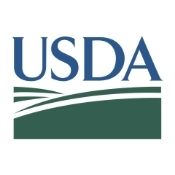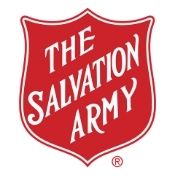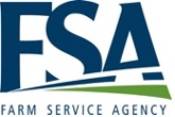After a wildfire identifying and applying for disaster assistance is an important step in the recovery process. When deciding which funding opportunities to apply for, consider the following:
- Evaluate timelines for applying, including if your community is prepared to meet the grant requirements
- Consider timeline of funding availability, grant funding may take a year to be obligated or may be on a reimbursement-only basis
- Understand recordkeeping requirements for each grant
- Follow state and federal procurement guidelines
- Review FEMA and other federal grant funding restrictions
- In-kind work, donations and volunteer hours often can be counted as match funding for federal grants but they must be carefully documented, keep track of everything staff and volunteers are doing
Financial Tips for Individuals
Wildfire can be financially devastating for homeowners. Below are some tips to assist individuals, families and businesses at this difficult time:
- Document, document, document take pictures of your property and provide ‘before’ images if available. Photograph all damage from multiple angles to help insurance claims and applications for assistance programs. If you are reading this prior to a wildfire, keep records and photos of your property stored in an off-site location such as a safety deposit box to assist you in keeping them safe for insurance and other claims.
- Keep all of your receipts from restoration and recovery work.
- If you have insurance, contact your insurance agent as soon as possible. The Insurance Information Institute provides answers to frequently asked questions about wildfire and insurance. Utah’s Wildfire Insurance Brochure and FEMA’s Preferred Risk Policy can also help you plan ahead.
- Secure flood insurance. Flood after fire is a serious threat after a wildfire, for more information about flood insurance go to floodsmart.gov.
- Contact your lender as soon as possible if you cannot meet your financial obligations to pay your mortgage after a wildfire.
- A Presidential Disaster Declaration must be signed before a community is eligible for FEMA funding. FEMA does not replace homes or businesses and is not a substitute for insurance, it only provides minimal assistance for individuals impacted by a wildfire disaster.
- Take advantage of tax relief programs, if a major disaster is declared individuals who suffer losses may complete a retroactive tax return and take the loss out of the previous year’s return. This may provide some immediate funding for individuals in a post-wildfire situation. An accountant or your local IRS office can help you navigate this process.
- Contact your county emergency manager to report damaged or destroyed homes, structures, and businesses resulting from the wildfire so they can determine if the community qualifies for disaster assistance.
For information on organizations and grant programs for post-wildfire relief see below:
Resources for Individuals

American Red Cross - The American Red Cross responds to disasters 365 days a year and can assist impacted individuals with their immediate emergency needs. Call 1‐800‐RED CROSS (1‐800‐733‐2767) and ask for your local chapter.

Disaster Distress Helpline - The Disaster Distress Helpline can assist you after a wildfire. Those impacted by recent wildfires can reach out to them any time for support. Call 1‐800‐985‐5990, para español, oprima el dos, or text Text TalkWithUs to 66746 or Hablanos to 66746.

Farm Service Agency: Assistance with Natural Disaster Loses - The Farm Service Agency provides assistance for natural disaster losses, resulting from drought, flood, fire, freeze, tornadoes, pest infestation, and other calamities. For example, they provide assistance after a disaster to eligible livestock producers, honeybee producers, orchardists, forestland owners, tree nurseries and more. More information

Food Assistance - The SNAP (Supplemental Nutrition Assistance Program) may help you replace food lost in a disaster or help you apply for benefits. Call 1‐800‐283‐4465. More information

Help for Businesses and Non‐Profits: Small Business Administration - If your business or private, nonprofit organization has suffered physical damage or your small business or private, nonprofit organization of any size has sustained economic injury after a disaster, you may be eligible for financial assistance. More information

Help for Renters and Homeowners: Small Business Administration - The Small Business Administration provides low‐interest disaster loans with long‐term repayments to qualifyingindividuals and businesses. More information

Helping Children Cope with Disaster - Disasters can be especially stressful for families with children. FEMA (the Federal Emergency Management Agency) and Sesame Street provide resources to assist you in helping children cope with disaster. More information

Burned Area Initiative: Natural Resources Conservation Service - The NRCS Burned Area Initiative is part of the Environmental Quality Incentives Program (EQIP). The Burned Area Initiative is designed to help landowners restore conservation practices destroyed in fires or by off‐site fire impacts. All EQIP programs have a continuous sign‐up period. More information

The Salvation Army - The Salvation Army may provide temporary assistance for families in need, including vouchers for rent andemergency aid and legal aid. For information on services provided by The Salvation Army, click here. For Salvation Army locations and phone numbers in Utah, click here.
Southern Baptist Disaster Relief - SBDR is a Christian organization that aims to meet the urgent needs of hurting humanity in crisis situations. They provide many different types of relief, including food, water, child care, laundry, repairs, rebuilding and more. For example, they provided direct assistance in Utah after destructive wildfires such as removing debris from burned home sites. Southern Baptist Disaster Relief has gained national and international recognition for service in crisis situations across the nation and the globe. More information
2‐1‐1 Free Information and Referral Center - While 2‐1‐1 is not specific to post‐wildfire situations, it is a regional free Information and referral centerconnecting residents to community resources located in their area.
Resources for Landowners
Crops and Forage

Tree Assistance Program (TAP) - Orchardists and other qualifying growers of trees, vines, or bushes may receive financial assistance to replant or rehabilitate eligible plants through TAP. More information

2017 WHIP and Wildfires and Hurricanes Indemnity Program Plus (WHIP and WHIP+) - WHIP and WHIP+ provide financial aid to growers that experienced losses of crops, trees, bushes, and vines from wildfires, hurricanes, and other natural disasters during 2017, 2018, and 2019. More information

Noninsured Disaster Assistance Program (NAP) - The program provides coverage for growers that may be unable to plant or harvest a successful crop due to natural disasters. Eligible crops are agricultural commodities not covered by federal crop insurance. More information

Crop Insurance - Crop insurance provided by the United States Department of Agriculture may provide assistance to growers unable to plant or harvest a successful crop due to wildfire. More information
Livestock, Bees, and Fish

Livestock Forage Program (LFP) - Eligible livestock producers grazing federal land may receive financial aid from losses related to severe drought or wildfire occurring on the corresponding land. More information

Livestock Indemnity Program (LIP) - Livestock producers may receive assistance up to 75% of the market value of animals where mortality is caused by natural disasters, disease, or animal attacks. More information

Emergency Assistance for Livestock, Honey Bees, and Farm-Raised Fish (ELAP) - Livestock producers, apiarists, and aquaculturists may be compensated for livestock, honeybee, farm-raised fish losses, and transportation costs related to natural disasters, disease, or other adverse events. More information

Emergency Haying and grazing of CRP lands - Under specific circumstances, CRP lands may be grazed or hayed as an emergency relief measure for producers affected by a severe drought or natural disaster. Emergency haying or grazing must be approved by the FSA. More information

Emergency Animal Mortality Management - Contact the local NRCS field office for more information.
Land and Conservation

Emergency Watershed Protection Program (EWPP) - Two EWPP program options are available to landowners and communities. Option 1: project assistance for reparations of slopes and infrastructure, e.g., seeding, contouring, and debris removal). Option 2: acquisition of floodplain easements. More information

Natural Disaster Recovery Assistance Through EQIP - EQIP is not a disaster relief program, but producers may be able to receive assistance for post-wildfire projects that conserve water, reduce erosion, improve livestock water access, or other land improvement projects. More Information

Emergency Conservation Program (ECP) - Information about the program: Farmland rehabilitation assistance may be available to producers where land was damaged by wildfire or other natural disasters. More information
Loans and Deferment

Emergency Loan Program - Recovery loans are available to help agriculture professionals recover from losses due to various natural disasters including wildfire. More information

Disaster Set-Aside Program - Producers with an existing direct loan from the USDA may be able to temporarily defer loan payments after suffering losses from wildfire or similar disasters. More information
Financial Tips for Communities
After a wildfire one of the most important tasks in community response is identifying and applying for disaster assistance. Key items to consider when evaluating funding sources and preparing to apply for assistance in your community include:
- Fund immediate threats
- A Presidential Disaster Declaration or a Fire Management Assistance Grant (FMAG) declaration must be established before a community is eligible before FEMA funding
- Document damages carefully including:
- Homes, structures and businesses destroyed
- Losses businesses suffered due to the wildfire, save receipts for any repair work
- Insurance information for homes and businesses
- Take pictures from multiple angles of damage particularly infrastructure and provide ‘before’ images, if
available
- If you receive government funding you must follow state and federal procurement guidelines
- Ensure compliance with all cultural and environmental permitting before doing any recovery work
- Permitting takes time, contact your county’s permitting department and the U.S. Army Corps of Engineers to secure necessary permits before starting any recovery work
Resources for Communities

Emergency Watershed Protection: Natural Resources Conservation Service - The Emergency Watershed Protection (EWP) program provides technical and financial assistance to safeguard people and property following natural disasters, such as floods, fires, wind storms, earthquakes, and drought. More information

HMGP Hazard Mitigation Grant Program Post‐Fire - States, territories and tribes in an area affected by a fire for which assistance was provided under a FMAG for declarations issued after October 5, 2018 can apply for HMGP grant funding. FEMA HMGP Fact Sheet

Continuing Authorities Program: US Army Corps of Engineers - This fund is for relatively small projects dealing with floodplain management, flood control, ecosystem restoration, erosion control and stream bank protection. This program is broad, including activities such as stream bank erosion protection, modifications to existing infrastructure, and more. It is funded by Congress. More information

Emergency Flood Protection: US Army Corps of Engineers - The US Army Corps of Engineers can provide emergency assistance during flood events. USACE emergency assistance is intended, by law, to be temporary in order to meet immediate threats. Through this program, USACE can provide technical assistance to State and local governments with regard to emergency preparedness and planning activities. Under Public Law 84‐99, USACE can provide emergency assistance during flood events. USACE emergency assistance is intended, by law, to be temporary in order to meet immediate threats. USACE can provide technical assistance to State and local governments with regard to emergency preparedness and planning activities. Assistance is intended for State and local agencies to develop contingency plans, evacuation plans, and exercises to lend expertise in both areas.
Following a flood event, but prior to a Presidential declaration pursuant to the Stafford Act, USACE may provide Post‐ Flood Response assistance. Post‐Flood Response activities are limited to actions necessary to save lives and protect public facilities, and residential or commercial developments. Post‐Flood Response assistance by USACE can include clearance of debris from transportation routes, critical infrastructure, and water courses when it is required to prevent loss of life or significant damage to public property. A written request for Post‐Flood Response from the Governor of a State to the USACE District Commander must be provided concurrently with or immediately after the Governor's request for a Presidential disaster declaration under the Stafford Act. This request must indicate that the recovery work is beyond the capability of the State to accomplish; identify specific damage locations; and detail specific requirements for USACE assistance. USACE assistance may be provided for a maximum of ten (10) days from the date of receipt of the Governor’s request for assistance. No work, including contract work, can be performed after the 10‐day period expires. No work can be initiated if a Presidential declaration request is denied.
Advance Measures USACE may build Advance Measures flood damage reduction projects on a case‐by‐case basis. Specific areas that have been impacted by forest fires leaving denuded terrains will be considered based on National Weather Service forecasted rainfall models and expected impacts to life and improved property. USACE may perform Advance Measures prior to flooding or flood fighting activities to protect against and mitigate loss of life and significant damages to urban areas, public facilities, and/or critical infrastructure. Advance Measures must be in response to an “imminent threat of unusual flooding” with the potential to approach an area's flood of record, a catastrophic level of flooding, or a greater than 50‐year level of flooding. Activities are limited to the protection of life and the protection of public facilities/infrastructure in imminent danger of flooding, and the law specifically excludes assistance to individual homeowners and businesses, including agricultural property.
USACE resources can only be requested by a State Emergency Management Agency or by Tribal governments, and can only occur once State, Tribal and local governments have committed all available resources (i.e., workforce, supplies, equipment, funds, National Guard assets, etc.). Funding availability is subject to the budget cycle. More information

Permanent Flood Protection Solutions: US Army Corps of Engineers - The US Army Corps of Engineers has the authority to construct large‐scale flood risk management (FRM) projects,including dams and engineered levees, through the Civil Works Program. Smaller‐scale projects may be constructedthrough the Corps' Continuing Authorities Program. More information

Tribal Partnership Program: US Army Corps of Engineers - This program enables the US Army Corps of Engineers to assist on a reconnaissance study of various water resources and related issues with Pueblos and Tribes. Examples of topics include flood damage reduction, environmental restoration and protection, watershed planning, and cultural resources studies. More information

Regulatory Program Authority: US Army Corps of Engineers - The US Army Corps of Engineers (USACE) can assist with permitting after a wildfire has occurred. A permit is required from the USACE for activities involving discharge of fill or dredged materials into bodies of water in the US. Dredged material includes the redistribution of rocks, gravel and sediments already in the stream, lake, pond, wetland, etc. More information

